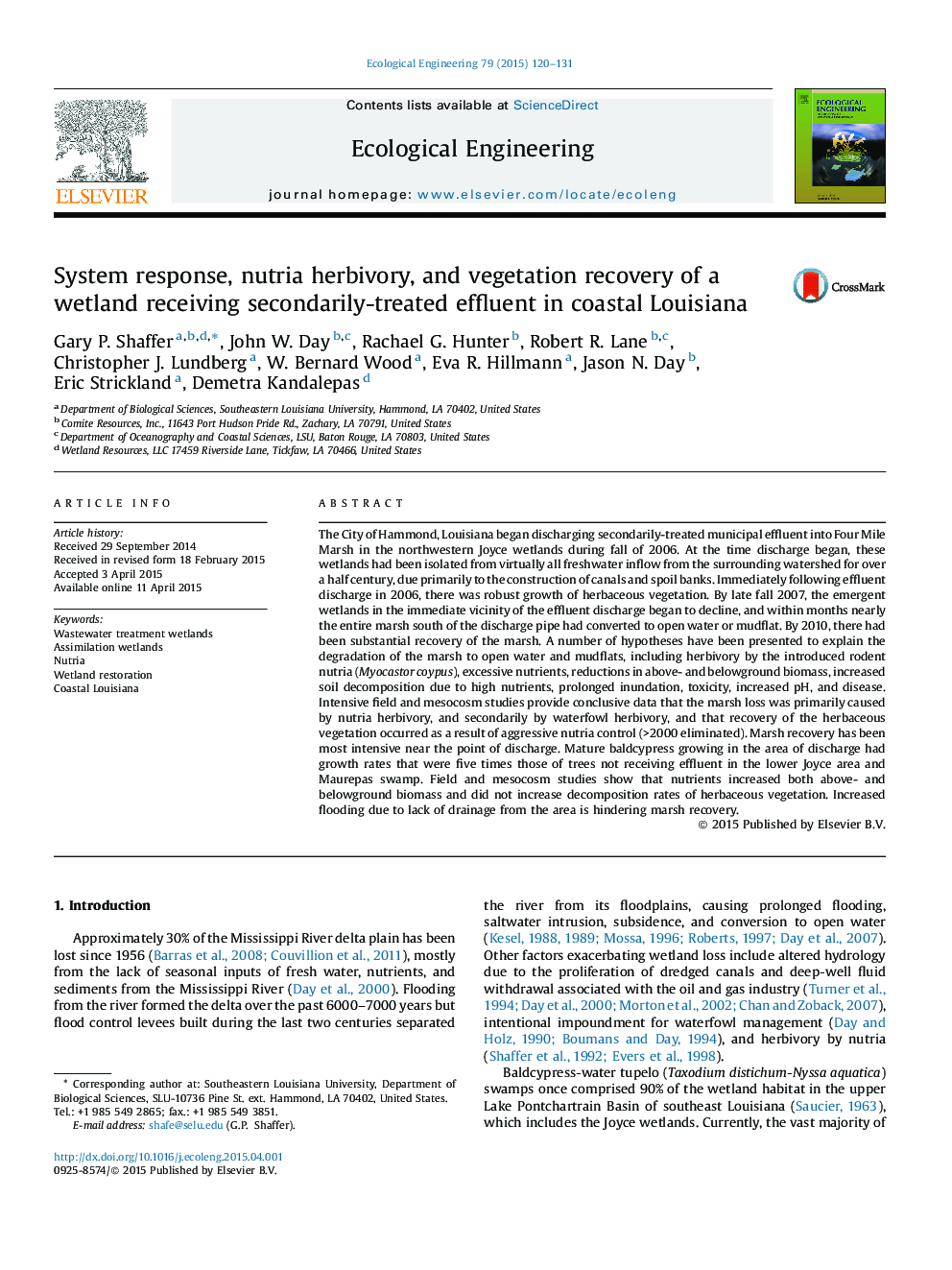| کد مقاله | کد نشریه | سال انتشار | مقاله انگلیسی | نسخه تمام متن |
|---|---|---|---|---|
| 4389126 | 1618020 | 2015 | 12 صفحه PDF | دانلود رایگان |

The City of Hammond, Louisiana began discharging secondarily-treated municipal effluent into Four Mile Marsh in the northwestern Joyce wetlands during fall of 2006. At the time discharge began, these wetlands had been isolated from virtually all freshwater inflow from the surrounding watershed for over a half century, due primarily to the construction of canals and spoil banks. Immediately following effluent discharge in 2006, there was robust growth of herbaceous vegetation. By late fall 2007, the emergent wetlands in the immediate vicinity of the effluent discharge began to decline, and within months nearly the entire marsh south of the discharge pipe had converted to open water or mudflat. By 2010, there had been substantial recovery of the marsh. A number of hypotheses have been presented to explain the degradation of the marsh to open water and mudflats, including herbivory by the introduced rodent nutria (Myocastor coypus), excessive nutrients, reductions in above- and belowground biomass, increased soil decomposition due to high nutrients, prolonged inundation, toxicity, increased pH, and disease. Intensive field and mesocosm studies provide conclusive data that the marsh loss was primarily caused by nutria herbivory, and secondarily by waterfowl herbivory, and that recovery of the herbaceous vegetation occurred as a result of aggressive nutria control (>2000 eliminated). Marsh recovery has been most intensive near the point of discharge. Mature baldcypress growing in the area of discharge had growth rates that were five times those of trees not receiving effluent in the lower Joyce area and Maurepas swamp. Field and mesocosm studies show that nutrients increased both above- and belowground biomass and did not increase decomposition rates of herbaceous vegetation. Increased flooding due to lack of drainage from the area is hindering marsh recovery.
Journal: Ecological Engineering - Volume 79, June 2015, Pages 120–131